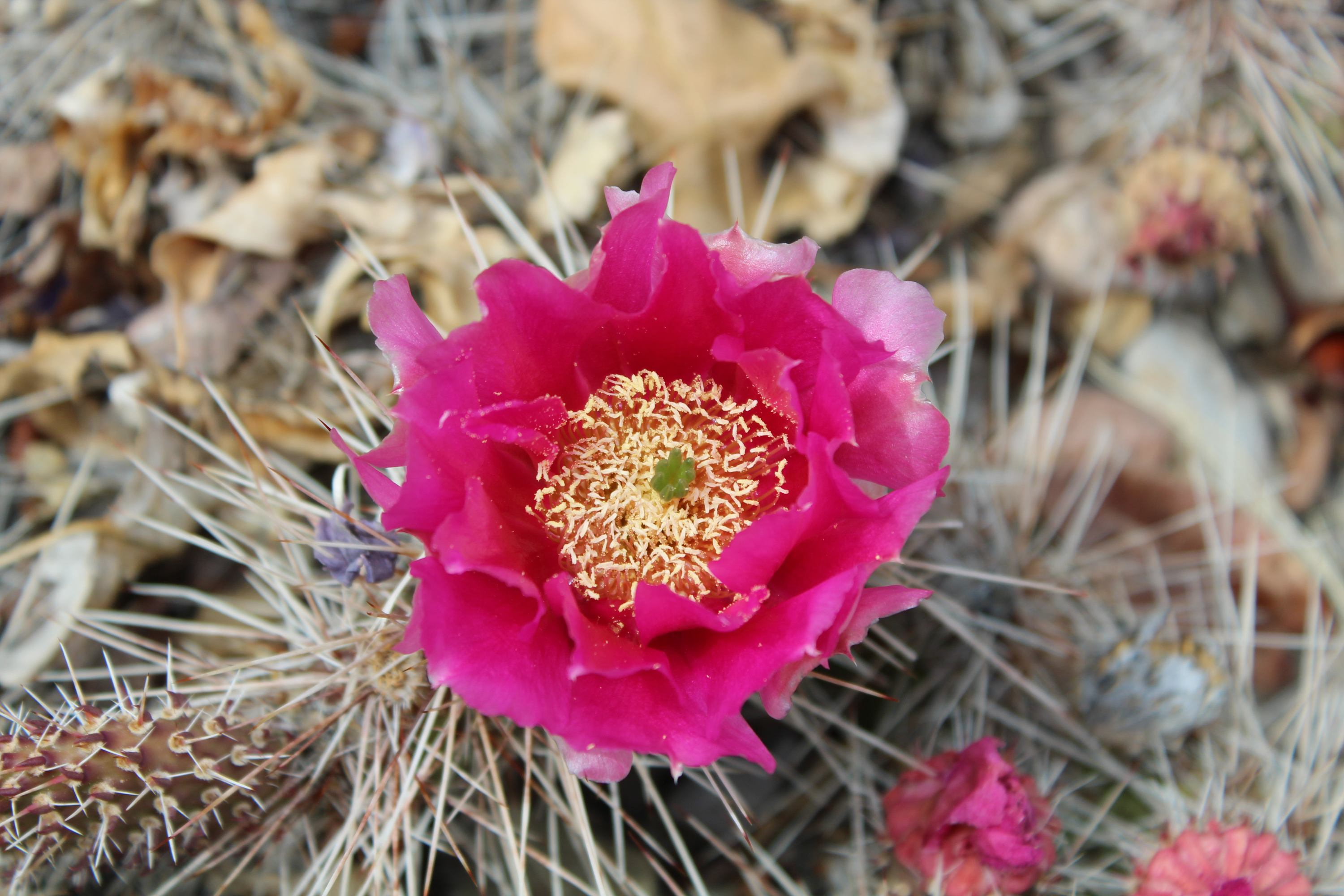Bulrush Canyon prickly-pear
(Opuntia pinkavae)

Description
Opuntia pinkavae, common names Bulrush Canyon prickly-pear or Pinkava's pricklypear, is a species of cactus known only from northern Arizona and southern Utah. It grows in sunny locations in grasslands, on the edges of pinyon-juniper woodlands, on sandy or limestone soils. It was named for Dr. Donald Pinkava, professor emeritus at Arizona State University in Tempe. He studied Opuntia for many years. The species is one of the smaller members of the group, rarely more than 25 cm (10 inches) tall. Stems are green, flattened, up to 15 cm (6 inches) long. Flowers are magenta with yellow to magenta anthers and white styles. Fruits are tan, up to 3 cm (1.2 inches) long, dry when ripe. There is a bit of confusion concerning the correct scientific name. Specimens of O. pinkavae were distributed for years labeled as "Opuntia kaibabensis", a name that was never validly published. Parfitt's original description coining the name Opuntia pinkavae and the treatment attributed to Pinkava in Flora of North America suggest that the name was offered as a replacement for another allegedly unpublished name, Opuntia basilaris var. woodburyi. However, the varietal name was indeed validly published, but chromosomal comparisons between it and O. pinkavae show that they are not the same taxon. Bottom line in this is that Opuntia pinkavae remains an accepted name with no synonyms. Opuntia, commonly called prickly pear or pear cactus, is a genus of flowering plants in the cactus family Cactaceae. Prickly pears are also known as tuna (fruit), sabra, nopal (paddle, plural nopales) from the Nahuatl word nōpalli for the pads, or nostle, from the Nahuatl word nōchtli for the fruit; or paddle cactus. The genus is named for the Ancient Greek city of Opus, where, according to Theophrastus, an edible plant grew and could be propagated by rooting its leaves. The most common culinary species is the Indian fig opuntia (O. ficus-indica). O. ficus-indica is a large, trunk-forming, segmented cactus that may grow to 5–7 m (16–23 ft) with a crown of over 3 m (10 ft) in diameter and a trunk diameter of 1 m (1 yd). Cladodes (large pads) are green to blue-green, bearing few spines up to 2.5 cm (1 in) or may be spineless. Prickly pears typically grow with flat, rounded cladodes (also called platyclades) containing large, smooth, fixed spines and small, hairlike prickles called glochids that readily adhere to skin or hair, then detach from the plant.
Taxonomic tree:







